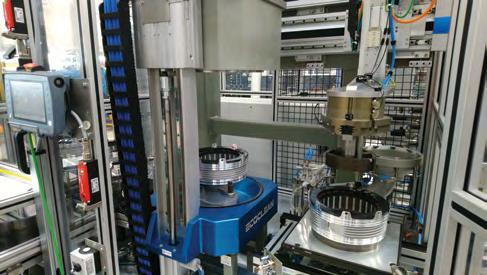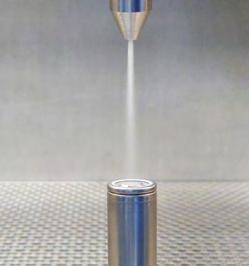
2 minute read
Electric mobility presents new challenges for cleaning
by Doris Schulz, Journalist, Korntal, Germany
The new parts and components, as well as manufacturing processes required, have to meet new specifications.
The development of new vehicles for electric mobility is not only leading to new and changed requirements in the automotive and supplier industry, it is also having an impact on industrial parts cleaning. In addition to particulate contamination, filmic-chemical contamination due to the surface requirements of downstream processes, such as bonding, welding and sealing, has also become an important factor. Also, greater focus is being placed on the technical cleanliness of production and assembly lines as well as production equipment, in order to eliminate re-contamination and cross-contamination.
Systems in the electric vehicle that require high levels of cleanliness
An electric motor, an energy system in the form of a traction battery or fuel cell, and power electronics are the three essential components that distinguish an electric vehicle from one with an internal combustion engine. There are specific cleanliness challenges with each of these systems. In the case of the electric motor, the first requirement is technically clean production of each individual component, such as the stator, the rotor and the housing. To achieve this, for the most part, wet-chemical solutions can meet even extremely demanding particulate cleanliness specifications. However, cleanliness problems often arise during the final assembly of stators, for example, in the form of metallic and non-metallic particles from pre-processes. Dry cleaning solutions are required for their removal, which can be easily integrated into the assembly line, even retroactively if required, and enable effective, automated individual part cleaning in the production cycle. The cleanliness of the production equipment, such as handling systems and grippers, should also be considered, in order to prevent re-contamination.
Clean manufacturing for energy systems
The traction battery, in the form of lithium-ion batteries, is the preferred energy system in electric vehicles today. Cleaning processes can be integrated into the series production of the batteries before, or after, various manufacturing steps. This begins in the production of the electrodes, with the cleaning of the substrate before coating; continues with the cleaning of the electrode sheets after separation by punching or laser cutting; and ends in battery pack assembly, with the preparation of the adhesive surfaces of the battery pack cover after the modules have been integrated. The interconnection of the cells, by electrically connecting the contact surfaces with the arrester, e.g. by
Dry cleaning solutions, such as compressed air cleaning, are used to remove impurities from preprocesses, such as the removal of metallic and non-metallic particles during the final assembly of stators, for example. Image: Ecoclean/ZF.

Clean contact points are crucial in the electrical connection of the battery cells for high energy density and the safe functioning of the battery. CO2 snow blasting technology, which can be integrated into the bonding process, can be used for cleaning. Image: acp systems.









